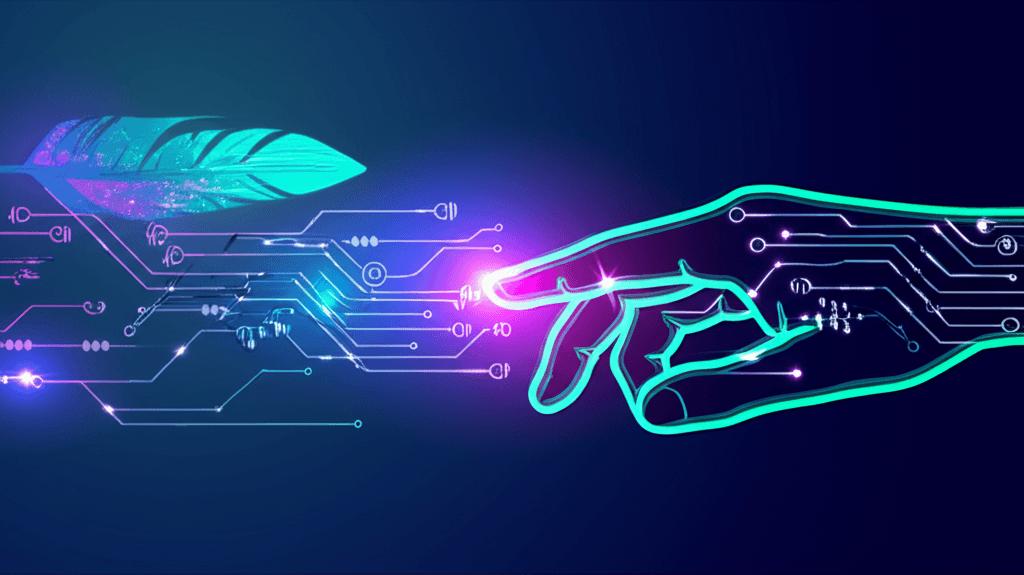AI Forges New Creative Alliance, Redefining Artistry and Authorship
Dumas's "fiction factory" reveals how AI redefines authorship, creativity, and the collaborative future of art.
July 6, 2025

In the bustling literary marketplace of 19th-century Paris, Alexandre Dumas became a titan, his name synonymous with swashbuckling adventure and historical romance. Yet, behind the phenomenal output that included classics like "The Three Musketeers" and "The Count of Monte Cristo," was a collaborative enterprise critics derisively termed a "fiction factory."[1][2] This system, which relied heavily on assistants, most notably the talented writer Auguste Maquet, is now finding a remarkable parallel in the 21st century with the rise of artificial intelligence in creative fields.[3][4] As authors, artists, and musicians increasingly partner with AI, the controversies and questions that swirled around Dumas's workshop are echoing in modern debates about authorship, originality, and the very nature of creativity.[5][6] This resurgence of a collaborative model, once a subject of scandal, suggests a potential paradigm shift in how creative works are conceived and produced.
The engine of Dumas's literary production was his collaboration with a team of writers, with Auguste Maquet standing out as his most crucial partner.[3][7] Their process was methodical and efficient. Maquet, a trained historian, would conduct the necessary historical research and draft detailed plot outlines and initial versions of the novels.[3][8][9] Dumas would then take this foundation, embellishing it with his signature vibrant dialogue, dramatic flair, and narrative pace—the "Dumas touch" that made the stories so captivating.[3][10][1] This partnership was responsible for at least 18 novels, including many of his most famous works.[3][8] However, the collaboration was not without its conflicts. Despite Maquet's significant contributions, his name was left off the title pages, a decision driven by the publisher who recognized the commercial power of the Dumas brand.[3] This led to a lawsuit where Maquet sought royalties and co-authorship credit. While the court awarded him financial compensation, it denied his claim to be recognized as a co-author, cementing Dumas's sole public claim to the literary masterpieces.[3][7]
Today, a new kind of "Maquet" has emerged in the form of generative AI.[11] Writers and other creatives are increasingly using AI tools not as replacements, but as sophisticated collaborators.[5][11] These AI systems can function as tireless research assistants, brainstorming partners that generate plot ideas or character sketches, and even as initial drafters that produce text which the human author then refines and imbues with their unique voice and emotional depth.[11] Much like Maquet provided the structural and historical groundwork for Dumas, AI can handle time-consuming tasks, freeing up human creators to focus on higher-level aspects of their craft.[11] This dynamic allows for a rapid exploration of different narrative paths and styles, potentially overcoming creative blocks and expanding the scope of what a single individual can produce.[11] The relationship is becoming a dialogue between the artist and the machine, where the AI's output can surprise and shift the direction of a work in real time, positioning it as a semi-autonomous partner in the creative process.[6]
The parallels extend to the ethical and philosophical questions that this collaborative model raises. In Dumas's time, rivals accused him of being a mere brand, signing his name to work produced by a stable of lesser-known writers.[1] Similarly, the use of AI has ignited fierce debates about the definition of authorship and originality.[5][12] If an AI generates the foundational plot and initial text, who is the true author? The person who provides the initial prompt, the programmers who designed the algorithm, or the AI itself?[12] This challenge to traditional notions of authorship is forcing a re-evaluation of intellectual property laws and the very concept of creativity, once seen as an exclusively human domain.[5][13] Critics voice concerns that the proliferation of AI-generated content could devalue human creativity, leading to formulaic and repetitive art.[6] Just as some dismissed Maquet's work as mere drudgery, some today see AI's contribution as lacking the essential spark of human experience and genius.[14][6]
In conclusion, the story of Alexandre Dumas and his "fiction factory" provides a powerful historical lens through which to view the burgeoning partnership between humans and artificial intelligence in the creative industries. The "Maquet machine" of the 19th century, with its division of labor between a master stylist and a diligent researcher and plotter, foreshadowed the collaborative workflows emerging with AI.[3][9] The controversies over authorship, credit, and the value of collaborative work that shadowed Dumas are the same ones being debated in the context of AI today.[5][7] While Dumas's critics saw a dilution of genius, others recognized an "extraordinary alchemy" between him and Maquet, a creative synergy where each was essential to the final product.[10] As AI becomes an increasingly integrated co-creator, the future may not belong to the lone genius, but to those who, like Dumas, can masterfully conduct a symphony of collaborative talent, blending human ingenuity with machine intelligence to create the next generation of masterpieces.[11] The evolving relationship between human and machine promises not the death of creativity, but its redefinition on a new and innovative frontier.[6][11]
Sources
[1]
[5]
[6]
[7]
[8]
[10]
[11]
[12]
[14]